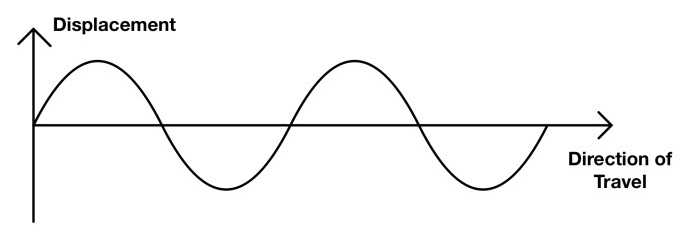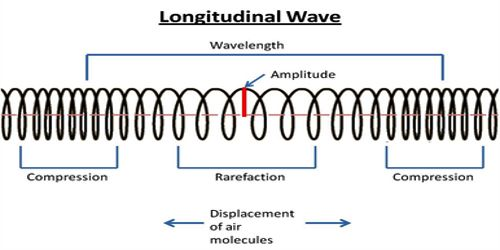A wave is a disturbance which transfers energy from one point to another without the net displacement of matter. If we throw a pebble into the center of a lake it creates a disturbance which travels outwards from the center. The kinetic energy of the stone becomes kinetic energy of the water particles which is carried by the neighboring particles to the corners of the lake (transfer of energy). When the ripple reaches the corners, the particles come back to their rest position (no net displacement).
Types of waves
There are three($3$) main classifications for waves:
- Mechanical waves - these require a medium to transfer energy
- Electromagnetic waves (light waves) - these do not require a medium to transfer energy (they can be propagated through a vacuum)
- Matter waves - related to wave-particle duality, the idea that something can be a wave and particle at the same time
Propagation is the movement or spreading of waves
Mechanical waves
These are propagated through a medium (solid, liquid or gas). They can travel at different speeds based on which medium is present . For example, sound waves travel faster through a metal than through air. There are two types of mechanical waves:
- Transverse waves
- Longitudinal waves
Transverse waves
These are waves in which the direction of wave propagation (and by extension, energy transfer) is perpendicular to the movement/displacement of the particles. Examples include light waves and water waves.
Credits: The Science and Maths ZoneMock lab
- Follow the link by clicking this link
- Choose the ‘Oscillate’ option and the ‘Loose end’ option
- Increase the amplitude to $1.25\ cm$
- Describe what happens to the particles in the string which are highlighted in green
Longitudinal waves
These are waves in which the direction of wave propagation (and hence energy transfer) is parallel to the movement/displacement of the particles. Sound waves and waves traveling through a slinky are examples of longitudinal waves.
Credits: QS Study

